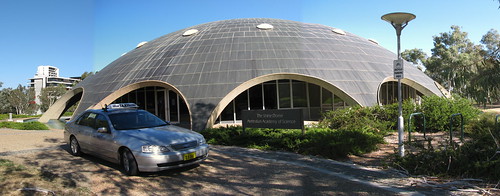
Once upon a time, tennis players knew their tools intimately. John McEnroe reckoned that rackets had a “sweet spot”, and the secret of his success lay in hitting the ball just right. He’d have extra bounce, extra control, extra spin if he could use just the right few square centimetres of racket.
The taxi racket has its own sweet spots, and every cabbie knows them well. For Canberra, on the weekday nights I drive, the sweetest spot is between four and six in the afternoon. That’s when demand is at a peak, finding a fare is easy, and the passengers are at their best.
I’ve mentioned the three questions that every night cabbie asks to himself of his passengers:
Is the passenger going to attack me?
Is he going to run off without paying?
Is he going to throw up in my cab?
If the answer to any of these questions is “Yes!”, then you lock your doors and drive away.
Afternoon passengers are definite “No’s”. Mostly, in Canberra, they are public servants wanting a ride to the airport. People in suits and briefcases, loaded down with corporate credit cards and Cabcharge vouchers. They might have a drinkie or two in the Qantas Club before their flight, but for now, they are solid, sober citizens, and every cabbie loves them.
For two hours, they line up on ranks, they clog up the radio despatch system and they leap out at you on the streets. Cabbies make half their night’s takings in the afternoon.
After six, the flow is the other way. It’s people wanting to get home. People finishing off in the city, people loaded down with groceries, people on the arriving flights at the airport. There’s no frenzy to it, but until about ten o’clock, it’s steady work. I generally work out of the airport, finishing up around ten, when two or three flights arrive at once to overload the waiting taxis. After that, the last flight is half past eleven, it’s often only half full, and most of those passengers on the no-frills carrier have a family member to give them a lift home. For a cabbie, it’s hardly worth waiting an hour for the chance of a fare.
But there’s not a lot of other work around in the late evenings. If Parliament is not sitting, with a flow of staffers catching cabs home, then it’s usually a matter of hoping for the final few restaurant patrons, and sharing the work with hungry cabbies all wanting one last good fare to go home on. The sweet spot is well and truly gone at this stage.
Sometimes there will be a concert or a conference or a ball finishing up. A hundred people in dinner suits, all wanting cabs. Be in the right place at the right time, and a good cabbie can make a quick fifty before the flow dries up.
Midnight, and there’s nothing much. Sit on the main city rank chatting with the other drivers, scanning the empty streets. Wait an hour for a passenger. Most of the fleet has gassed up and gone home, but there’s always a few people out and about, and with the public transport shut down at midnight, cabs are their only way home.
But it’s slow work, and on a quiet night, you might work two hours for five dollars in your pocket. Or get a good fare to a distant suburb for sixty.
Thursday nights can be busy, and there’s always a tonne on Fridays. But carting drunks home is where the cabbie has those three questions in the front of his mind. It can be good money, but it’s not sweet. Besides, on Thursdays and Fridays, those same cabbies who went home early on other nights are now staying on. More competition.
And as the end of the twelve hour shift approaches at three in the morning, the drunks are getting reasonably ratty. They have drunk their money away, and sometimes scamming a cabbie is the only way home.
It’s a matter of balance, skill and experience. Making the most of the shift’s “sweet spot” is what it’s all about.




